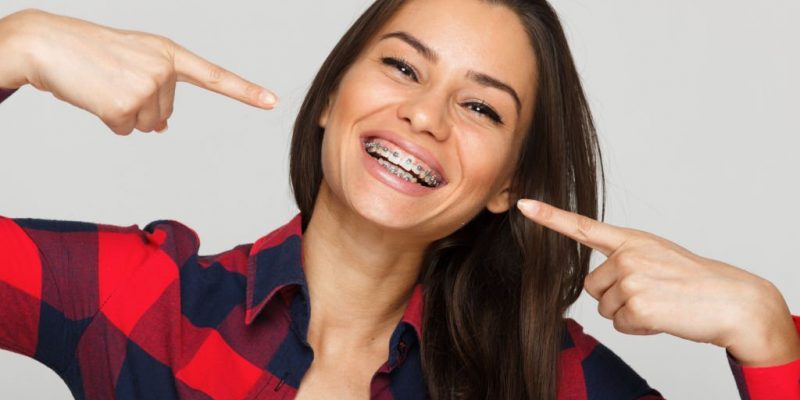In layman’s language, orthodontics is a branch of dentistry that treats malocclusion – a condition wherein the placing of teeth is incorrect when a person closes their mouth, culminating in an improper or uneven bite. Thus, in simple words, orthodontic treatments make teeth straight and improve bite and jaw function.
Although orthodontic processes have cosmetic value and help improve a person’s appearance, they often aim at improving oral function. People with crooked, twisted, overlapped, or gapped teeth might have to opt for orthodontic devices such as braces, clear aligners, and retainers to better their bite. A reliable Cherokee dentistry clinic can help you navigate various orthodontic appliances.
Types Of Dental Problems That Orthodontics Can Solve: A Crisp Overview
The way a person’s teeth fit together significantly affects their oral health. Improving how an individual’s upper and lower teeth meet can mitigate the risks of pertinent oral health issues like cavities, gum diseases, erosion, etc. Simultaneously, orthodontic treatments enhance the visual appeal of a person’s smile and teeth. The various problems that orthodontics can deal with are –
- Protruding Front Teeth – Treatment can improve the appearance of a person’s teeth and smile and protect the teeth from damage during injuries, sports, accidents, etc.
- Reverse Bite – When a person closes their mouth, the upper teeth bite inside the lower teeth set. However, orthodontic devices can correct the problem.
- Crowding – There might not be enough space for all teeth to fit correctly for people with the narrow jaw. In such a situation, the best orthodontists Jacksonville might remove one or more teeth to make room for others.
- Overbite or Deep Bie – When an individual closes their jaw, the upper ones come down too far over the lower ones. Orthodontic devices can help mend the situation.
- Impacted Teeth – When a person’s adult tooth does not fully emerge from the gum or bone and only erupts partially, it is an impacted tooth.
- Asymmetrical Teeth – Sometimes, a person’s upper and lower teeth sets do not align, especially when we close our mouths and expose the teeth. Orthodontic devices can correct asymmetrical teeth to enhance aesthetics and improve bite functions.
- Open Bite – When clenching teeth, there is an opening between the upper and lower teeth, and it is an open bite.
- Crossbite – Orthodontic treatments can help ameliorate many bad bite types, including a crossbite. It is a situation when a person clenches their teeth, and there is an opening between the upper and lower teeth.
- Spacing – Some people have gaps or spaces between their teeth. The situation may arise owing to tooth loss or if the teeth naturally do not fill the mouth. Orthodontic devices like aligners and retainers can help reverse the problem.
- Ancillary Problem – Last but not least, the best orthodontists in Jacksonville can solve problems, such as grinding or clenching of teeth, clicking of the jaw, mending uneven jaw, and more.
Now that we know about the different dental problems that orthodontics can solve, let’s see how you can get the results.
Orthodontic Treatments That Improve Jaw And Bite Function
Orthodontic treatments help millions of people improve their jaw and bite function. For instance, in 2018, 1.6 million Americans opted for orthodontic devices. Some of the most common treatments that orthodontists recommend to improve improper bite and related issues are-
-
Braces
They are one of the most common orthodontic devices that help straighten and shift a person’s teeth into the desired position. Braces work by using a combination of wires, bands, and brackets. Currently, 4 million Americans use braces, of which 25 percent are adults.
-
Clear Aligners
They are a popular alternative to traditional metal or ceramic braces. The most popular clear aligner brands include Invisalign and ClearCorrect. Unlike conventional braces that co-opt brackets and wires to straighten a person’s teeth, clear aligners use customized clear aligner trays.
Clear aligners like Invisalign are ideal for mild to moderate orthodontic issues like crowded teeth, open bites, and more. An individual has to wear a set tray set for a week or two before shifting to the next set in the series. In time, aligners change a person’s teeth into the correct positions.
-
Retainers
A retainer is a customized dental device that keeps the teeth from drifting out of their proper positions. A person who uses braces or aligners would need retainers once their orthodontic treatment is over. The best Cherokee dentistry clinic can advise you on how often you need to wear a retainer to maintain the results of your orthodontic treatment.
Wrapping It Up
So, we have a crisp overview of the three most common orthodontic devices that help maintain and improve proper bite and jaw functions.

